Digital Manufacturing Revolution in Marine, Defence and Maritime
This technical paper explores how digital manufacturing can open up faster and low volume sourcing options for products and parts within the marine, defence and maritime industries.
Introduction
Marine, defence and maritime industries are fast evolving sectors that are pioneering digitilisation and automation.
According to a recent survey by McKinsey, the majority of defence manufacturers say digital adoption is already a reality and plans are in place to further pioneer advances in robotics, autonomous vehicles and artificial intelligence over the coming years.
And it is a similar story in maritime applications where digital technologies and solutions are helping increase competitiveness and operational efficiency within the sector. To strengthen competitiveness and efficiencies, maritime operators need to re-think existing strategies in order to meet current and future opportunities.
To help meet this evolving situation ships and offshore structures need part, product or system improvements. They also need spare parts and while these are often stocked it can sometimes be a problem deciding which they need.
According to a recent report by GSF, one of the key strategic areas of development is to adopt new operating methods through outsourcing specific functions to external companies – such as those companies providing digital manufacturing services. This whitepaper explores the role of digital manufacturing in helping the industry evolve to meet its present and future challenges.
In section 1 of this technical paper, we will explore the current role of digital manufacturing in the marine, defence and maritime sectors. Section 2 will help you explore how to select the best technology for your needs. And finally, section 3 will give you some tips on choosing the right manufacturing partner and will also outline two case studies demonstrating the value of outsourced digital manufacturing.
Section 1: Current State of the Industry
The ability of digital manufacturing technology to respond quickly, often in as little time as a day, using technologies such as 3D printing, CNC machining and rapid injection moulding, can help overcome the twin problems of rapid product development and access to spare parts. These technologies can create parts in commercial-grade plastics, metals and liquid silicone rubber.
You can see many examples of defence and marine application use parts manufactured from each of these three processes in diagrams 1 and 2 below.
| WHAT IS DIGITAL MANUFACTURING? |
|---|
|
The term digital manufacturing refers to an integrated approach, combining computer software (for CAD upload, automated quoting and design feedback) and connected manufacturing systems, accelerating part creation and product development using 3D printing, CNC machining (for low volumes) and injection moulding (for higher volumes). |
Such technologies, especially 3D printing for rapid prototyping of designs, are already partially established across the entire sector, but there are some challenges that are preventing more widespread adoption.
Section 1A: 3D Printing

3D printing, also known as additive manufacturing, has proved useful for small jobs on board ships, but past problems of using commercial ‘desktop’ printers have included a slow print speed, the necessity of carrying sufficient print materials, and the inherent weakness of printed parts from this equipment.
Also, when on board, the printer is sensitive to the power fluctuations of the ship’s electrical system which causes the machine to need resetting on a regular basis.
More recent industrial 3D printing technologies have advanced considerably to overcome these issues, and can now print a variety of different materials to a high specification with the properties needed by the sector - for example, previously cast metal high load parts for propellors and crane hooks can now be 3D printed using direct metal laser sintering.
However, the equipment required is generally too expensive and large to be present on site. External digital manufacturing partners can help bring previously mentioned benefits to the industry without the equipment requirements, but sadly they remain largely underutilised, possibly because of a lack of understanding about what recent advances in the technology and in material science can achieve.
Section 1B: CNC Machining

There is also a growing trend towards using CNC machining to produce complex functional parts for marine and defence based applications. For example, a tooth wheel, which has projections at precisely equal distances apart, with corresponding indentations or spaces between them, is an ideal candidate for metal CNC machining.
CNC machines are capable of accurately trimming excess material, perfectly aligning the projections and indentations of the part and adding details through milling, grinding, turning, boring, reaming and threading, using specific machine tools for each task.
But rapid and highly accurate machining capabilities on board remain somewhat elusive, so operators are also beginning to turn to outsourcing this area of digital manufacturing.
Section 1C: Injection Moulding

Injection moulding is not new to the defence and marine industries which have used it for decades often to replace metal with plastic or engineered resins for parts and components that are strong, lightweight and durable. After all resins will survive extremely corrosive environments, such as salt water, without any extra processing.
Most people think of this technology for mass produced parts and believe that it can take several weeks or even months and be expensive to create tools; but advances in on demand rapid injection moulding, using aluminium moulds instead of steel, means that it is now common to use it for both prototyping and production of low to medium volumes of parts and components.
If you can find the right digital manufacturer then rapid injection moulding could provide the answer that you are looking for.
Section 1D: Where are we Today?
Marine and defence companies are already making some use of outsourced digital manufacturing to support their drive towards competitiveness and operational efficiencies and to drive technological innovation. Components, particularly supplied with relevant regulatory requirements, can be used in battle ships, submarines, cargo ships, bulk carriers, offshore rigs and other safety-critical environments, with assurance and trust. Examples of parts produced include:
- Parts for instrumentation
- Electrical components and casings
- Specialist enclosures
- Deck and pipe fittings
- Parts for arrester gears and propulsion systems
- Connecting shafts, flanges and valves
- Couplings, manifolds, guides and housings
- Propellers and crane hooks
- Other engineered components for marine vessels
Unfortunately, the benefits of digital manufacturing: automation, speed, choice, flexibility, precision, quality and expert consultancy remain heavily under-utilised. This is unfortunate because it could help the sector much more in achieving its strategic goals.
Section 2 explores each of the three technologies highlighted in more detail to help you make an informed choice on when to use each.
Section 2: Future Technologies - Choosing The Right One For You

Digital manufacturing can deliver rapid, reliable and high-quality parts for marine and defence applications. It can also help develop bespoke engineering solutions for it and its supply chain, to help drive innovation.
One potential area for growth in 3D printing, CNC machining and rapid injection moulding is through the manufacture of spare parts where the original moulding casts no longer exist.
For 3D printing other opportunities lie in reviewing and exploring design possibilities to increase efficiency, create more robust designs and unlock decarbonisation benefits for parts such as deck and pipe fittings, valves, propulsion and braking components, and sensoring equipment.
Although the remote printing of spare parts is evident, deployment of the decentralised and high-performing ‘3D printer on a ship’ would appear to be a longer-term ambition. Current adoption of the technology will depend on the ability of digital manufacturing companies to overcome several factors, not least industry cultural barriers.
All three of these digital manufacturing technologies will need to prove the durability and reliability of the components that they produce and pass the most stringent tests of equivalence with existing products if they are to be specified for the extreme and demanding conditions that they will face. Evidence of quality certifications, accreditations and standards achieved will all support industry confidence.
Section 2A: Unlocking 3D Printing's Full Potential
3D printing, or additive manufacturing, builds a part by applying thousands of extremely thin layers of material on top of each other. It means that designers can create CAD models with highly complex geometries that are often challenging to mould or machine, with internal channels and holes that are unreachable by end mills, or entire assemblies printed as a single piece.
The appropriateness of the technology depends on the application of the part. The rapid printing of a metal propeller blade, for example, has inherent operational value to a ship’s engineer, but it would never go into production because only one or two printed pieces are needed. Another application is creating bespoke scupper plugs – in small quantities – from engineering-grade plastics or metals.

Advantages of 3D printing:
- Rapid and accurate generation of prototypes and components, specifically where original moulding casts no longer exist.
- Tool-less manufacturing.
- Work with complex designs and geometries.
- Potential improvement of designs for items such as deck and pipe fittings, valves, propulsion and braking components, sensoring equipment.
- Suitability for work in relevant materials such as stainless steels, Inconel 718, titanium and aluminium.
- No, or fewer, subassemblies.
- A leaner inventory (digital warehouse).
- Fast/just in time part availability.
- Reduced downtime.
- Compliance with strict industry risk certification and quality standards.
- Lower carbon footprint through reduced manufacturing emissions.
There are a number of different 3D printing technologies and which is the best process for you will depend on a number of factors including: speed, cost, appearance, supported materials and the physical properties you need. In the early stages of prototyping, you may only need something that you can hold in your hand, whereas later stage prototyping and production of final parts will need very precise characteristics.
Following, we outline the different types of 3D printing available and their advantages and disadvantages.
| BJET | Binder Jetting |
|---|---|
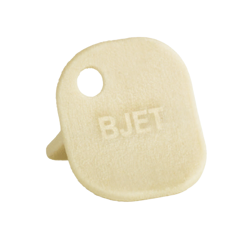 |
Binder jetting is one of the simplest and most basic additive prototyping processes. An inkjet print head moves across a bed of powder, selectively depositing a liquid binding material, Pros
Cons
|
| FDM | Fused Deposition Modeling |
|---|---|
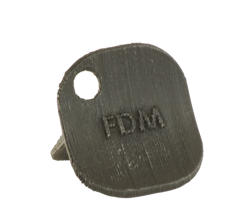 |
Fused deposition modeling (FDM) melts and re-solidifies a thermoplastic resin (ABS, polycarbonate or BS/polycarbonate blend) in layers to form a finished prototype. Because it uses real thermoplastic resins, it is stronger than binder jetting and may be of limited use for functional testing. Pros
|
| SL | Stereolithography |
|---|---|
 |
Stereolithography (SL) uses a computer-controlled laser to build parts in a pool of UV-curable resin. As each layer is drawn/set by the laser, the part is lowered in the pool of liquid resin to add the next layer of liquid. The quality of the finished part depends largely on the quality of the equipment and process used. Pros
Cons
|
| SLS | Selective Laser Sintering |
|---|---|
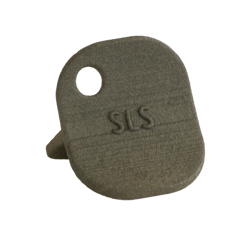 |
Selective laser sintering (SLS) employs a computer-controlled CO2 laser to fuse layers of powdered material such as nylon from the bottom up. Strength is better than that of SL but lower than that produced by subtractive processes like injection moulding or CNC machining. It also has some use as a production method. Pros
Cons
|
| PJET | PolyJet |
|---|---|
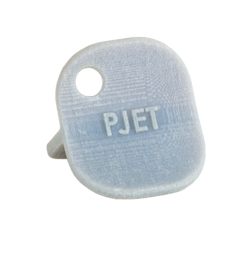 |
PolyJet (PJET) uses a print head to spray layers of photopolymer resin that are cured, one after another, using ultraviolet light. The layers are very thin allowing superior resolution. The material is supported by a gel matrix that is removed after completion of the part. Pros
Cons
|
| DLP | Digital Light Processing |
|---|---|
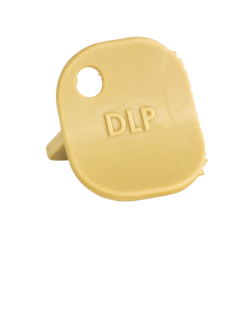 |
Digital light processing (DLP)-based additive manufacturing digitally slices a solid into layers, which a Texas Instruments DLP chip projects, one after another, onto the surface of a liquid photopolymer bath. The projected light hardens a layer of liquid polymer resting on a movable build plate. The build plate moves down in small increments as new images are projected onto the liquid, hardening each subsequent layer to produce the finished object. The remaining liquid polymer is then drained from the vat, leaving the solid model. The process can be useful for producing low volumes of small, highly detailed parts but is less suitable for larger parts, especially those requiring smooth finishes. Pros
|
| DMLS | Direct Metal Laser Sintering |
|---|---|
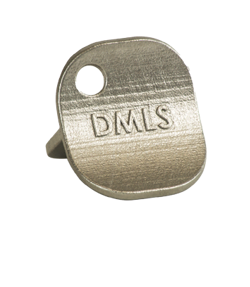 |
Direct metal laser sintering (DMLS) is the leading additive method for making metal prototypes and production parts. It is similar to selective laser sintering of plastic resin, but is suitable for use with metals including aluminium, stainless steel, titanium, cobalt chrome and Inconel. It offers good accuracy and detail, and excellent mechanical properties. DMLS can be used for very small parts and features, and because it is an additive process, it can reproduce geometries that might be impossible to machine such as enclosed spaces. Layers can be as thin as 20 microns, and tolerances on small features can be as small as ±0.002 inches. Secondary operations on parts produced by DMLS can include machined drilling, slotting, milling and reaming, and finishing procedures including anodising, electro-polishing, hand polishing, and powder coating or painting. Pros
|
Section 2B: Realising the Full Benefits of Injection Moulding
Plastics are becoming increasingly important in marine and defence applications offering a number of advantages over metals for certain applications including, high strength to weight ratio, corrosion resistance and low cost.
While both 3D printing and CNC machining offer options for low volume production for resins, injection moulding remains a great option for volumes from a few hundred to the mass production of hundreds of thousands of plastic parts. The process offers low cost per part for higher volumes, precise tolerances and custom finishes.
Most people associate this technology with mass production but with modern digital technology and by using aluminium moulds, instead of steel, it also provides a cost-effective solution for lower volumes for anything from 100 parts upwards. For these small to medium production runs, deliveries are possible in a short as a day – although more typically delivery would be in 10 -15 days.
Advantages of injection moulding:
- Efficient production for medium to high volumes.
- Low cost per part.
- Repeatability – ideal when you need to have parts with high tolerances and repeatability.
- Large range of materials available.
- Low waste.
- Produces highly detailed parts.
- Little or no post processing.
Disadvantages of injection moulding:
- Initial cost of producing moulds, although this can be mitigated by using aluminium moulds.
- Initial lead times – for steel tooling this can be up to 12 weeks. Using aluminium moulds, we can ship in 15 days or less.
- Design limitations – see “Design Essentials for Injection Moulding”.
- Small part runs are not always cost effective. The cost per part will fall as your volume increases – again this is mitigated by using aluminium moulds for lower volumes.
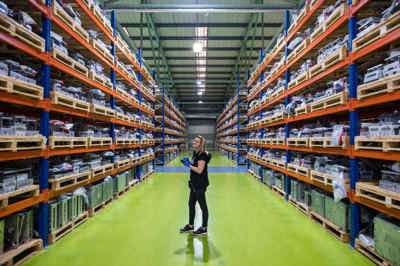
| COMMERCIAL-GRADE MATERIALS |
|---|
|
Protolabs stock more than 100 mouldable thermoplastic resins and liquid silicone rubber materials that are suitable for various part applications and industries. Customer-supplied materials are also accepted. |
Section 2C: Unlocking CNC Machining's Full Potential
CNC machining is constantly evolving it gets faster, more accurate and more accessible every day.
Some suppliers, like Protolabs, provide highly automated machining services that are dramatically different from traditional machine shops that are labour intensive. Digital manufacturers are embracing automation to dramatically reduce lead times. For example by embracing proprietary technology, we can turn CAD models into machined parts and products in as fast as a day.
The very basic level of CNC machining – cutting from metals and plastics – is classified as either milling or lathing. A great deal of technology lies behind both, but put simply, a lathe grips a workpiece in a chuck and rotates it against a cutting tool, whereas a mill is the exact opposite, driving a rotating cutting tool against a workpiece that’s been clamped in a vice or fixture.
Despite their fundamental differences, CNC mills - more commonly known as machining centres – and CNC lathes - or turning machines - share many similarities. All have multiple axis points of motion, with which to drive cutting tools around and through the workpiece, thus removing material. All use drills or end mills to make holes, but where lathes use groovers, threaders, and other turning tools, machining centres use face mills, slotting cutters, and other rotating tools.

What to consider when sourcing CNC machining:
- Some shops specialise in low-volume and prototype parts, like Protolabs, while others are geared toward production runs in the tens of thousands and more. Determining which part volumes any given manufacturer is most competitive with is an important first step.
- The most efficient shops are those that use standardised processes and toolsets. These reduce setup times and tooling costs for lower costs and a faster turnaround.
- Standard toolsets, however, come at a cost. For example, a lathe or machining centre with a fixed number of tools may need to make those tools perform double-duty—using an end mill to drill a hole, for instance, or a grooving tool to turn a journal or shaft.
- Look for a shop that can offer multiple manufacturing options. Though For you might think that 3D printing is the clear path to quick delivery of prototype parts, if your part design allows, machining is often more affordable for one-off or low volume options.
- Make sure you also consider a supplier’s on-time delivery rate, its overall machining capacity, and whether it is a service provider with in-house production vs. a broker.
Advantages of CNC machining:
- Can handle small to large volumes (check with your supplier).
- Very precise, can be used to create intricate models.
- Uses a wide variety of materials.
- Can be used to manufacture models and parts quickly.
- Can produce very smooth surfaces when compared to 3D printing.
Disadvantages of CNC machining:
- CNC machines require skilled operator guidance.
- These machines are heavy, bulky and therefore need a lot of space.
- These machines are very expensive and require training to use.
- The materials used to make CNC machined parts are also very expensive and harder to procure.
| BALANCING CNC MACHINING AND 3D PRINTING FOR METAL PARTS |
|---|
|
It can be difficult to decide between subtractive and additive manufacturing when designing metal parts, so we've pulled together a helpful comparison guide to help you create the ideal equation for metal manufacturing. |
CNC machining materials for the marine environment
| Aluminium 5083 |
5083 is a marine grade aluminium. Due to its high magnesium content, it has good resistance to saltwater and industrial chemicals making it ideal for shipbuilding and marine environments. It also has good low temperature performance and offers excellent weldability. |
| Stainless Steel 316 |
Stainless steel 316 is easily machinable and has outstanding uniformity. It offers fast machining speeds, longer tool life, improved part quality, and a relatively low total cost of machined parts. It provides improved resistance to pitting and crevice corrosion in environments containing chlorides and other halides. |
| Brass |
Brasses are alloys of copper and zinc. They may also contain small amounts of other alloying elements to add other properties. Brasses have high corrosion resistance and high tensile strength. Machining grades of brass set the standard for the manufacturing technology, by which other metals are compared. |
| Titanium |
Titanium is sometimes called the ‘ocean metal’ because of its excellent lightweight, high strength and corrosion resistance. It is able to resist the erosion of saltwater and the typical marine atmospheric environment. |
| Nylon 66 (Glass-filled) |
Nylon66 (PA66) has high tensile strength and good UV and weather resistance. This grade of nylon polymer is re-enforced with glass fibres – so the composite material inherits good strength, hardness and abrasion resistance from the 30% glass filler, and the tough and lightweight properties of the plastic. |
Section 3: Choosing The Right Manufacturing Partner
If you are uncertain about how to best replace a part or select which digital manufacturing technology might be the best option for you, then it’s a good idea to find a supplier who provides all three of the technologies previously explored. Also, regardless of your experience don’t be afraid to ask questions. Digital manufacturers such as Protolabs can provide support with experienced applications engineers, who can provide advice on design modifications and materials to improve the performance of your parts and reduce part costs. And finally check also your supplier’s eCommerce capability, because it will save you time since you’ll be able to upload a CAD model for a cost estimate, lead time, and automated design feedback, rather than waiting for someone to come back to you.
|
Explore Sample Quotes by Service Protolabs’ sample quotes let you test drive our digital manufacturing platform to get a feel for how to navigate through the system. You can adjust materials, |
Section 3A: Certification
Marine and defence environments are extremely harsh and demanding so it’s worth knowing that your supplier can comply with strict selection criteria.

JOSCAR Accreditation
JOSCAR (the Joint Supply Chain Accreditation Register) is a collaborative tool used by the defence industry (and associated marine sector) to act as a single repository for pre-qualification and compliance information. JOSCAR can determine if a supplier is ‘fit for business’. Protolabs has been awarded this accreditation.
What the supplier accreditation offers buyers:
- Comprehensive, accurate and regular updated insight into third party risk.
- Thousands of third parties in a single, searchable, reportable and easily accessible system.
- Instant access to third party information, reducing the time needed to qualify new suppliers or renew contracts.
- They check all third-party information in accordance with a consistent, objective and continually updated process.
- Shared costs amongst community members, significantly reducing the cost of an in-house solution.
- Access to the combined experience and resources of other members in the community with shared goals and challenges.

DNV-Approved 3D Printing
Additive manufacturing is a rapidly developing manufacturing technology within the marine defence and maritime industries. As its role increases the industry needs to be confident in the process and understand and minimise the potential risk of failure of a manufactured part.
DNV is one of the world’s largest classification and certification societies that approves 3D printed / additive manufactured products. With a long history as a trusted independent partner to the marine sector and with a broad range of expertise, DNV is able to provide the necessary assurance to deliver trust in digital manufacturing.
To examine the potential of additive manufacturing for the sector, they recently carried out a feasibility study on 3D printed products in marine and offshore industries – with very promising results. Based on these studies, they developed a new classification guideline for the approval of 3D printed products. Protolabs became the first powder bed 3D printing service provider in EMEA with such certification.
The certification includes a build process qualification for Inconel 718, a feedstock metal.
Inconel 718 is as a high-strength, corrosion resistant nickel chromium that hardens with age and can be readily fabricated, even into complex parts, and used within extreme hot and cold temperatures. The properties of Inconel 718 make it an ideal material for use in the maritime and offshore sectors due to its performance in extreme environments, along with its durability and anti-corrosion properties.
You can use Inconel 718 at temperatures between -252°C and 704°C due to its ability to create a thick, stable passivating oxide layer at high temperatures. Inconel has good tensile, fatigue, creep and rupture strength and, as a 3D printed metal, can exceed the mechanical properties of its cast and wrought counterparts.
Case Studies
Real-life examples of how digital manufacturing has been used in marine, defence and maritime.
General Drones
Saving lives at sea with support from Protolabs' Multi Jet Fusion and Selective Laser Sintering services
Conclusion

The opportunities that digital manufacturing present to the marine, defence and maritime industries are considerable and will grow. 3D printing, CNC machining and injection moulding are helping these sectors:
- Achieve technological advancement
- Improve competitiveness and operational efficiencies
- Deliver precision engineering to the highest standards of quality and reliability
- Support greater safety
- Reduce carbon footprint
Exactly which of these digital manufacturing technologies you use will vary depending on your project. If you need your parts quickly however then digital manufacturing will play a crucial role. To find out more about Protolabs' capabilities visit our Services page, or feel free to contact us at +44 (0) 1952 683 047 or [email protected].
 Email [email protected] with your name, title of activity, and completion date to receive your certificate
Email [email protected] with your name, title of activity, and completion date to receive your certificate










